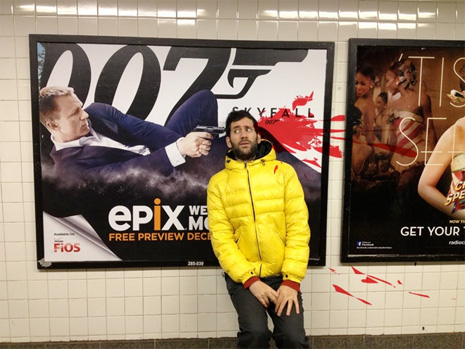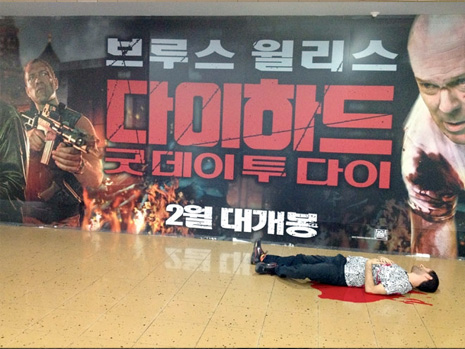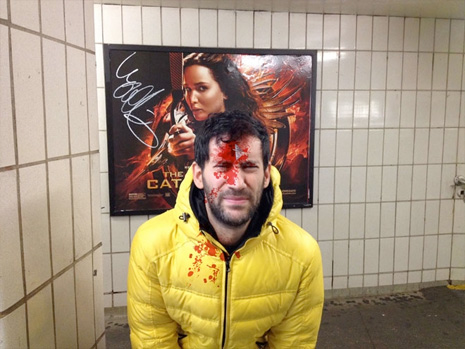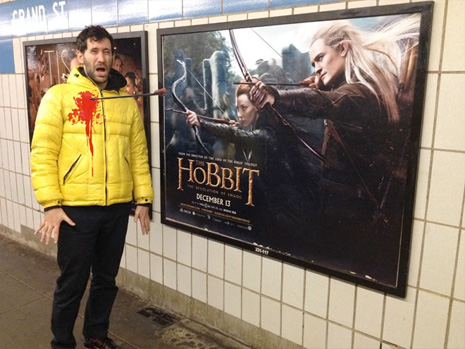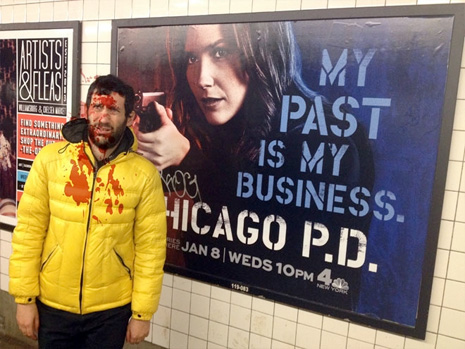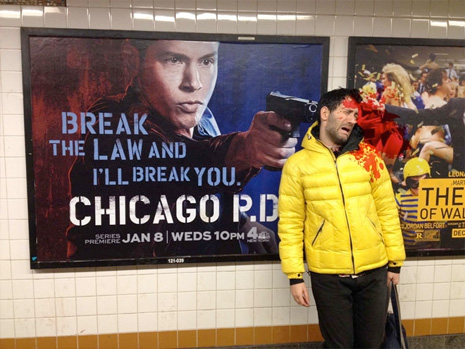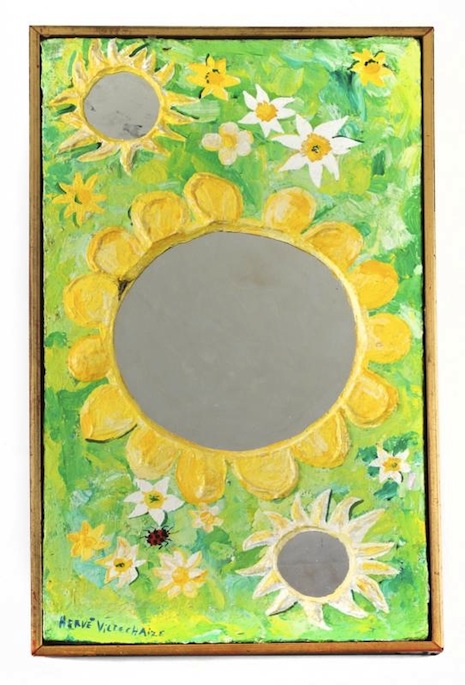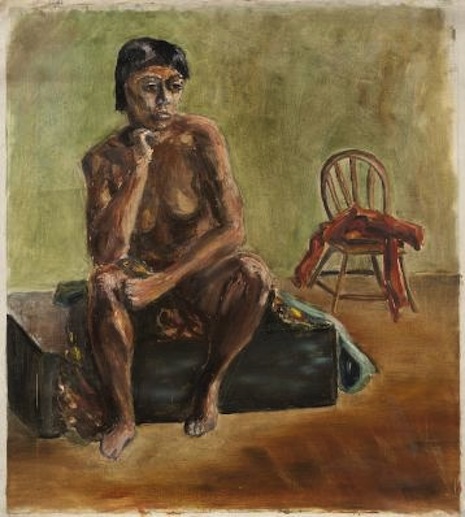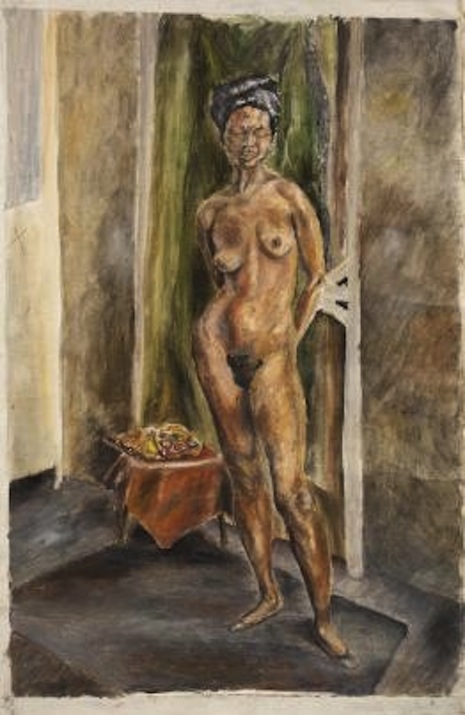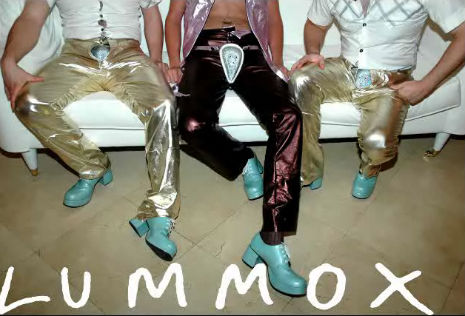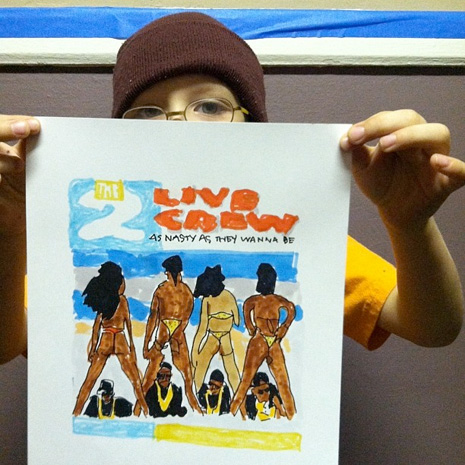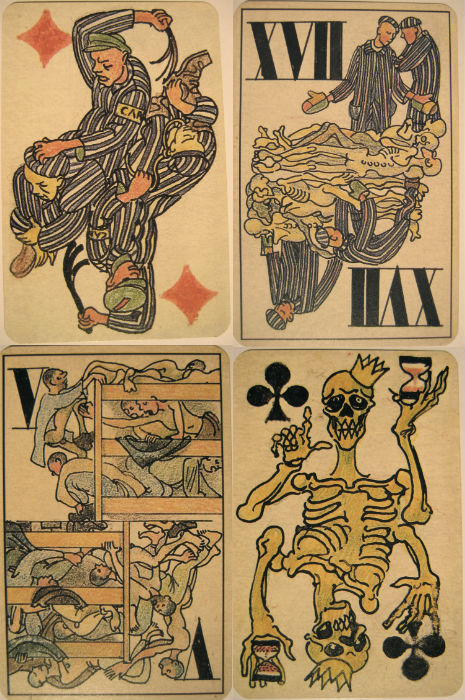
These fascinating playing cards are the work of a Slovenian artist named Boris Kobe who was held by the Nazis as a political prisoner in Allach, which was a sub-camp of the Dachau concentration camp near Munich. Kobe lived to see the end of the war, and was a very successful architect in his native Slovenia afterwards; he died well into his seventies in 1981. His most prominent project after the war was probably the restoration of the Ljubljana Castle with Jože Plečnik.
As I see it, it’s a little unclear when and where these cards were made. Sources uniformly describe them as having been made “at Allach”—yet at least one of them appears to have been made after the Allied liberation of the camp, and it’s difficult to imaging Kobe hanging around the camp for very long after that. Certainly there wasn’t weeks of clandestine card games going on after that crucial moment. It’s difficult to tell, but there might be a little rhetorical sleight of hand going on there.
Whatever the case, the cards are simply remarkable. First, they look pretty great; Kobe was a gifted caricaturist, and there’s a lot of pleasure to be gained simply from looking at them. But most importantly, they show a life at Dachau close-up in the frankest terms. The cards depict inmates and guards alike, although most of the figures depicted are inmates forced to do back-breaking work, crowded into bunk beds, disrobing en masse, and, of course, as a pile of skeletons. The king of clubs is depicted as a skeleton.
As I mentioned, these cards were almost certainly created after the liberation of Allach on April 22, 1945 by the 42nd Rainbow Division of the U.S. Army. How do we know this? It’s apparently depicted in one of the cards: Card XXI seems to show liberation, the Slovenian flag, and a tombstone-like image marked “Allach” that is being consumed by flames.
The cards are intended for a game variously called Tarock/Tarot, but the word tarot here is likely to be misleading to English-speaking audiences. Tarock/Tarot is a trick-based game like spades or gin that was popular in the Habsburg Empire and Europe generally for centuries. So this is not a tarot deck in the occult sense as we would think of it; that should be obvious from a glance at the cards, which lack characters like The Fool, The Magician, The Hanged Man, The Sun, and so on. To their creator Kobe and whomever else originally used them, it was just a regular deck of playing cards. I have family in Austria and on my visits there we would sometimes play a related game called “Schnapsen” which didn’t require four players and used a restricted deck, I think the cards only went down as far as the eight card. Basically a game of Schnapsen there was equivalent to the way dominoes is played in a lot of places, you’d play it aimlessly and shoot the shit and gossip.
See the complete deck at the Center for Holocaust and Genocide Studies website hosted by the University of Minnesota. The original deck is at the Archives of the Republic of Slovenia.
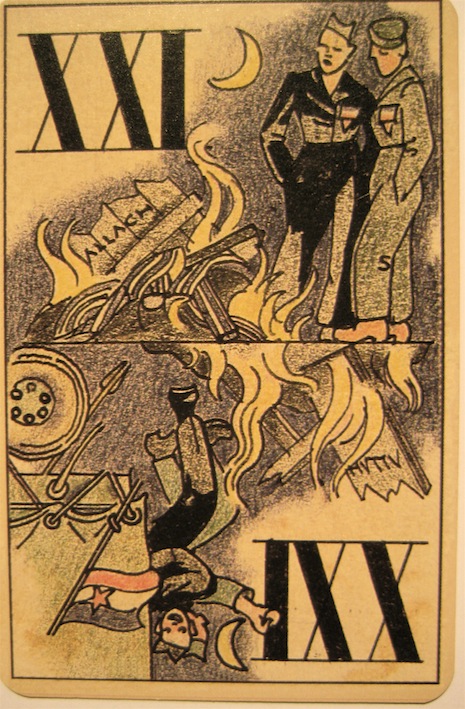
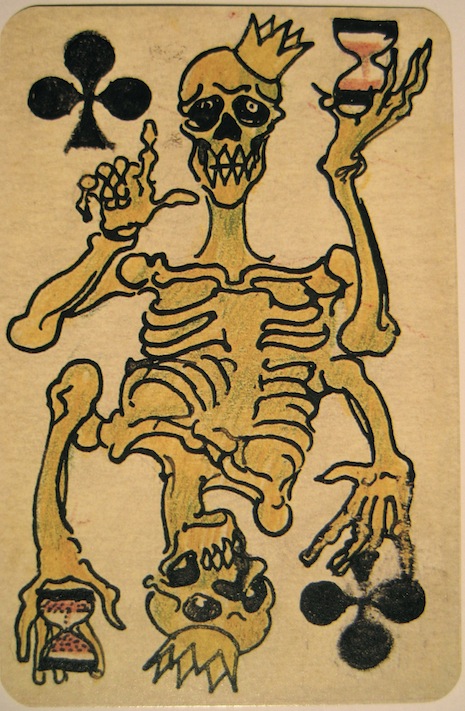

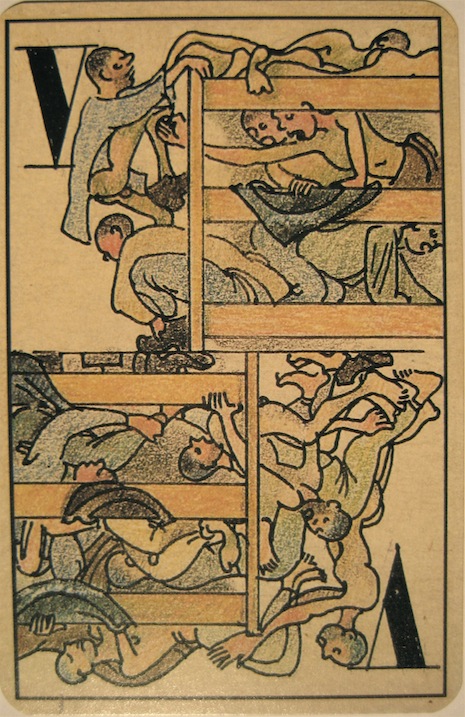

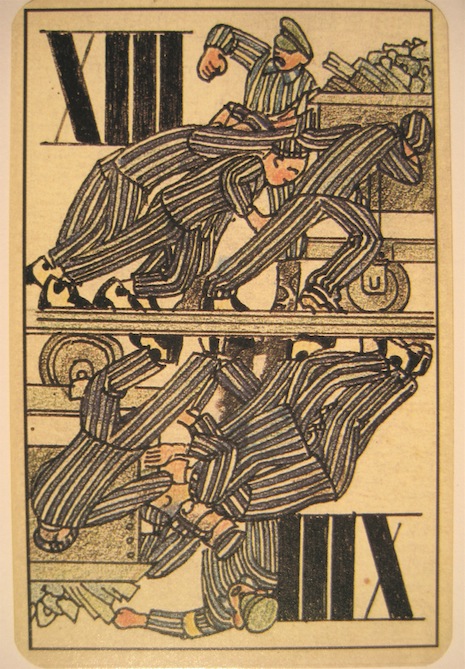
More of these amazing cards after the jump….



















_Japan.jpg)

